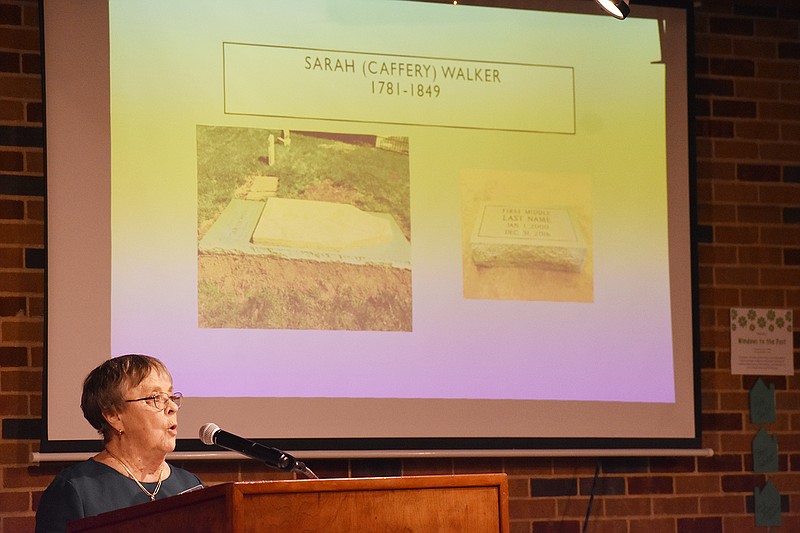Nancy Thompson spoke to Historic City of Jefferson members Sunday about some of the people buried at the Woodland-Old City Cemetery who had roles in shaping the history of not just Jefferson City, but the state of Missouri.
Thompson was the keynote speaker at HCJ's annual membership dinner, held at Avenue HQ.
Thompson said you can find oral/written history in libraries and historic artifacts in museums and even homes.
"But at the end of the day, it's all about the people," she said. "They built and occupied these buildings. The oral and written history is a record of their lives and achievements. And historic artifacts were once items of their everyday living.
"Restoring our cemeteries is another way of preserving a piece of our history," she said.
A note on the program said when the Howard's Bluff vicinity was picked as the permanent seat of government for the new state of Missouri, four sections of federal land were used to form Jefferson City. Out lot No. 38, at the city's eastern edge, was designated as the "city graveyard" and never sold.
Thompson noted Old City Cemetery was established in 1822, and Woodland Cemetery was formed in 1838. They eventually combined, and it is the oldest cemetery in Cole County and among the oldest in the state.
The cemetery started at the same time the city started, she said, "So the lives of those buried there are closely intertwined with the birth and development of Jefferson City, as well as the state of Missouri."
Among those buried at the cemetery are two former governors, Thomas Reynolds and John Marmaduke; legislators; and Alex Sherwood, Democratic state executive committeeman.
Thompson spoke about several other prominent historical figures who are buried at the cemetery, including:
Elias Barcroft, who, like many people of his time, held several positions. He was a state senator, and was involved in selecting Jefferson City as the permanent seat of state government. He also was a deputy surveyor of the Missouri territory, then state auditor, and, in 1840, was made commissioner to build a new jail at the corner of Monroe and McCarty streets.
Joseph Marcus Clarke, a wealthy newspaperman, real estate investor, banker and businessman. He had 12 children by two wives, and only three of his children lived to maturity and all three preceded him in death. He came from Kentucky and settled on a farm on the Osage River near Castlerock, where he conducted a profitable business until the outbreak of the Civil War. After the war, he sold the farm and moved back to Kentucky, where he returned to the newspaper business. In 1874, he sold the paper, and moved to Jefferson City, where he lived until his death.
Horace Augustus Swift, a brickmason who built a fortification across his property to protect the city from invasion during the Civil War. He was a judge, farmer and ran an ice house. He also served as warden at the old Missouri State Penitentiary, and was credited with building Capitol Avenue.
John Tweedie Sr. was a second-generation shoemaker who fought in the Civil War, and constructed negro schools through the Peabody Fund. In 1874 he came to Jefferson City with a shoe company that eventually became the Tweedie Shoe Company. At its height, the business employed 400 people. The maker of ladies' shoes, the factory closed in 1965.
Also at the meeting, Sue Higgens received the volunteer of the year award and Darryl and Connie Hubble were given the Pioneer Award.

